Bed bugs are among the most annoying infestations you’ll have to deal with. These small pests—about the size of an apple seed—blend into fabric of all types and can hide in the smallest spaces. The most disturbing fact about bed bugs is that they come out when you’re asleep to bite you and feast on your blood, leaving irritating, bumpy bites on your skin. While bed bugs get their name because they like to hang out in beds, sleeping bags are also vulnerable to these unwelcome hitchhikers. This guide covers both how to protect your sleeping bag from bed bugs and how to use sleeping bags as protection when traveling to potentially infested places.
Can Bed Bugs Infest Your Sleeping Bag?
Bed bugs can latch onto virtually any fabric, including sleeping bags. With their numerous folds and large cavity, sleeping bags actually provide ideal hiding spots for these pests. Once bed bugs take refuge in a sleeping bag, they can be incredibly difficult to eliminate due to their resilience and ability to go without food for extended periods. Many people wonder, “will bed bugs disappear naturally? ” Unfortunately, this is unlikely; without proper interventions, these pests can persist, reproduce, and spread to other areas, making it essential to take immediate action if an infestation is suspected. Regularly inspecting and cleaning sleeping bags can help reduce the risk of bed bugs finding a home in your gear.
Sleeping bags are particularly vulnerable to bed bug infestations for several reasons:
- Multiple Seams and Folds: The construction of sleeping bags creates numerous hiding spots where bed bugs can conceal themselves
- Material Composition: Most sleeping bags use fabrics that bed bugs can easily grip and navigate
- Storage Conditions: Many people store sleeping bags in closets or under beds—areas where bed bugs may already be present
- Travel Exposure: Sleeping bags often accompany us to hotels, campsites, and other locations where bed bugs might be present
Signs Your Sleeping Bag Might Have Bed Bugs
Not sure if your sleeping bag has been infested? Look for these telltale signs:
Physical Evidence
Live bugs (reddish-brown, apple seed-sized), shed skin casings, or tiny eggs in seams
Stains
Rust-colored or dark spots from crushed bugs or their excrement
Unusual Odor
A sweet, musty smell that wasn’t there before—especially in heavier infestations
Can bed bugs live in sleeping bags long-term? Yes, bed bugs can establish a colony in a sleeping bag if it provides access to regular blood meals.
How long can they survive in a packed sleeping bag? Bed bugs can survive up to a year without feeding in ideal conditions. In a stored sleeping bag, they can remain dormant for several months.
How to Treat an Infested Sleeping Bag
If you discover bed bugs in your sleeping bag, don’t panic. There are several effective treatment methods you can use:
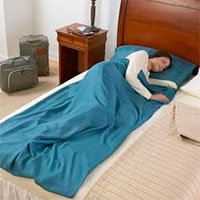 Always check product labels before treating your sleeping bag. Some treatments may damage certain materials or affect waterproofing. If your sleeping bag is expensive or made of specialized materials, consider professional treatment options. Never use pesticides not specifically labeled as safe for bedding or items that contact skin.
Always check product labels before treating your sleeping bag. Some treatments may damage certain materials or affect waterproofing. If your sleeping bag is expensive or made of specialized materials, consider professional treatment options. Never use pesticides not specifically labeled as safe for bedding or items that contact skin.
Preventing Re-infestation After Treatment
Once you’ve treated your sleeping bag, take these steps to prevent re-infestation:
- Proper Storage: Store clean sleeping bags in sealed plastic containers or compression sacks
- Regular Inspection: Check your sleeping bag before and after each use
- Isolation: Keep sleeping bags separate from potentially infested items
- Prompt Treatment: If you suspect exposure to bed bugs, treat your sleeping bag immediately
Using Sleeping Bags as Bed Bug Protection When Traveling
On the flip side, sleeping bags can actually help protect you from bed bugs in hotels, hostels, or other accommodations with suspected infestations.
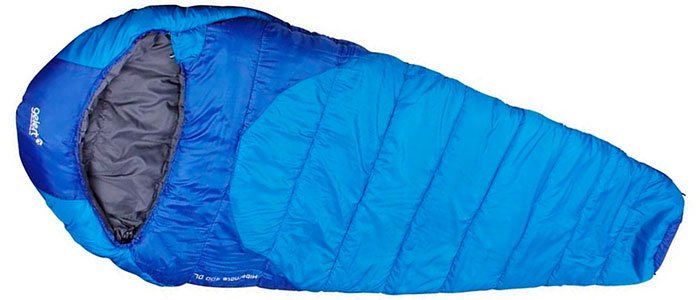
Here’s how sleeping bags can serve as bed bug barriers:
- Avoiding contact with infested bedding: Using your own sleeping bag means you won’t have to touch suspicious hotel sheets or mattresses
- Creating a physical barrier: Many sleeping bags can be cinched up around your neck, creating a protective cocoon that keeps bugs out
- Offering location flexibility: A sleeping bag allows you to sleep away from the bed—perhaps on a table, chair, or even in a bathtub—areas less likely to harbor bed bugs
Features That Make Sleeping Bags Bed Bug Resistant
Not all sleeping bags offer the same level of protection. Here are features to look for:
| Feature | Benefit |
|---|---|
| Smooth, slippery outer shell | Makes it harder for bed bugs to climb and grip the material |
| Minimal seams, especially around the face area | Reduces potential entry points and hiding spots |
| Tight-cinching hood/collar | Creates a better seal around your body |
| Mummy shape design | Reduces excess fabric where bugs could hide |
| Continuous zipper protection | Prevents bugs from entering through zipper teeth |
Treating Your Sleeping Bag With Repellent
Enhance your sleeping bag’s protective capabilities by treating it with natural bed bug repellents:
Fill a travel spray bottle with water and add 5 drops each of clove, cinnamon, tea tree, peppermint, lavender, and eucalyptus oils. Spray both inside and outside of your sleeping bag and allow to dry completely before use. The residual oils will help deter bed bugs.

Sleep Sacks and Sleeping Bag Liners
For added protection, consider using a sleep sack or sleeping bag liner. These products provide an additional barrier between you and potential bed bugs while offering other benefits:
- Added warmth and comfort
- Extra layer of cleanliness
- Easier to wash than entire sleeping bags
- Some are specifically designed to be bed bug resistant
The Friendly Swede Sleeping Bag Liner
Best LinerHow Does It Work
How to Use
- Use inside your sleeping bag or directly on a bed for added protection
- Fully zip up the liner to create a complete barrier
- For enhanced protection, spray with natural bed bug repellent before use
- After travel, wash promptly at high temperatures to eliminate any potential hitchhikers
- Store in its compact stuff sack away from potential infestation sources
- Generous 41" x 86" size fits most adults comfortably
- Full-length zipper for easy entry and complete enclosure
- Ultralight (only 9.17 ounces) and packs down small for travel
- Machine washable for easy cleaning after potential exposure
- Backed by lifetime warranty for peace of mind
- Standard polyester may not be as effective as specialized bed bug fabrics
- Zipper could potentially allow entry if not fully closed
- May be warm in hot environments
All Season Mummy Sleeping Bag
Best Sleeping BagHow Does It Work
How to Use
- Place on a clean surface away from walls when possible
- Inspect thoroughly before each use
- Zip completely and secure the hood opening around your face
- Consider treating with a repellent spray before use in high-risk areas
- Tapered design reduces excess fabric where bugs could hide
- Tight-cinching hood creates an effective seal
- Durable construction with minimal seams
- Suitable for year-round use in various temperatures
- Bulkier to pack than dedicated bed bug liners
- Requires proper cleaning facilities for maintenance
- May be too warm in some environments
Best Practices for Sleeping Bag Use in High-Risk Areas
If you’re staying in a location where bed bugs might be present, follow these guidelines:
Additional Products for Complete Protection
For comprehensive bed bug protection when traveling, consider these additional items:
- Protective Storage Bags: Keep your sleeping bag in sealed plastic bags or containers when not in use
- Portable Heating Devices: Some portable heaters are designed to treat gear at temperatures that kill bed bugs
- Bed Bug Detection Tools: Portable UV lights or bed bug traps can help identify problems before they spread
- Insect Repellent Clothing Spray: Treat your pajamas and the outside of your sleeping bag for additional protection
Do-It-Yourself Bed Bug Control for Sleeping Bags
Whether you’re trying to prevent an infestation or deal with an existing one, these DIY methods can help:
- Pesticides: Many different sprays are available that use chemicals designed to kill bed bugs. Most use pyrethrins, pyrethroids, dessicants, or insect growth inhibitors. Always choose products labeled as safe for bedding.
- Sticky Tape Barrier: Insect tape or extra-sticky carpet tape can trap bed bugs. Place this double-sided tape around your sleeping area to catch bugs in the adhesive as they try to reach you.
- Natural Repellents: Essential oils like clove, peppermint, and eucalyptus repel bed bugs. Mix 5 drops of each into 2 cups of water and spray around your sleeping area. These oils can both repel and eventually kill the bugs.
- Diatomaceous Earth: This white powder kills many types of insects. Though soft to the touch, microscopically it contains sharp crystals that damage bugs’ exoskeletons, causing them to dehydrate and die. Sprinkle it around your sleeping area for protection.
Conclusion
Bed bugs can have a significant impact on your sleeping bag—both as potential inhabitants and as pests you can protect yourself from. By understanding how to properly inspect, treat, and maintain your sleeping bag, you can prevent infestations and effectively deal with them if they occur. When traveling to high-risk areas, your sleeping bag can become an important tool in your bed bug prevention strategy.
Remember these key points:
- Regularly inspect your sleeping bag for signs of bed bugs
- Properly treat any infestations using heat, freezing, or appropriate chemicals
- Use sleeping bags with protective features when traveling to high-risk areas
- Consider supplementary products like liners and repellents for enhanced protection
- Store sleeping bags properly to prevent infestation
With these strategies, you can enjoy worry-free travel and camping without the nuisance of bed bugs affecting your sleep or coming home with you.
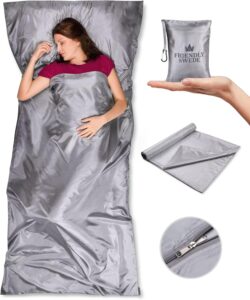
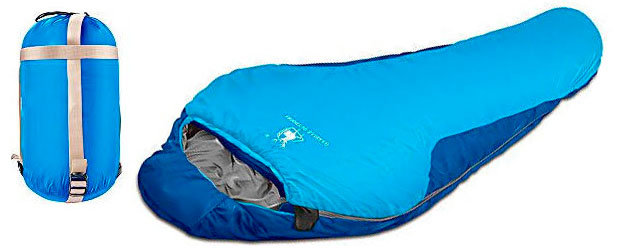
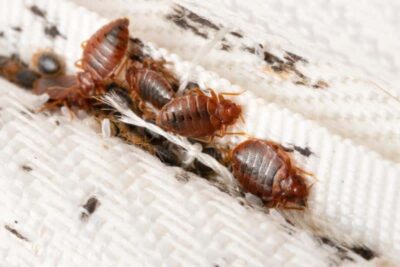

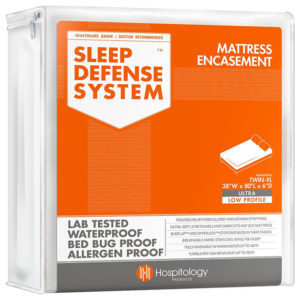

I am SUPER grateful for this article! I’m going to be doing a lot of hotel staying soon and I’m glad I can be prepared!